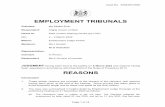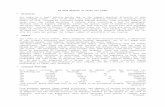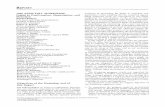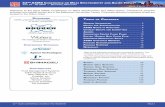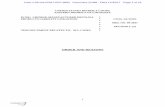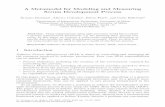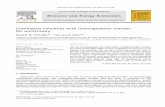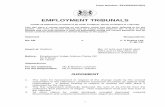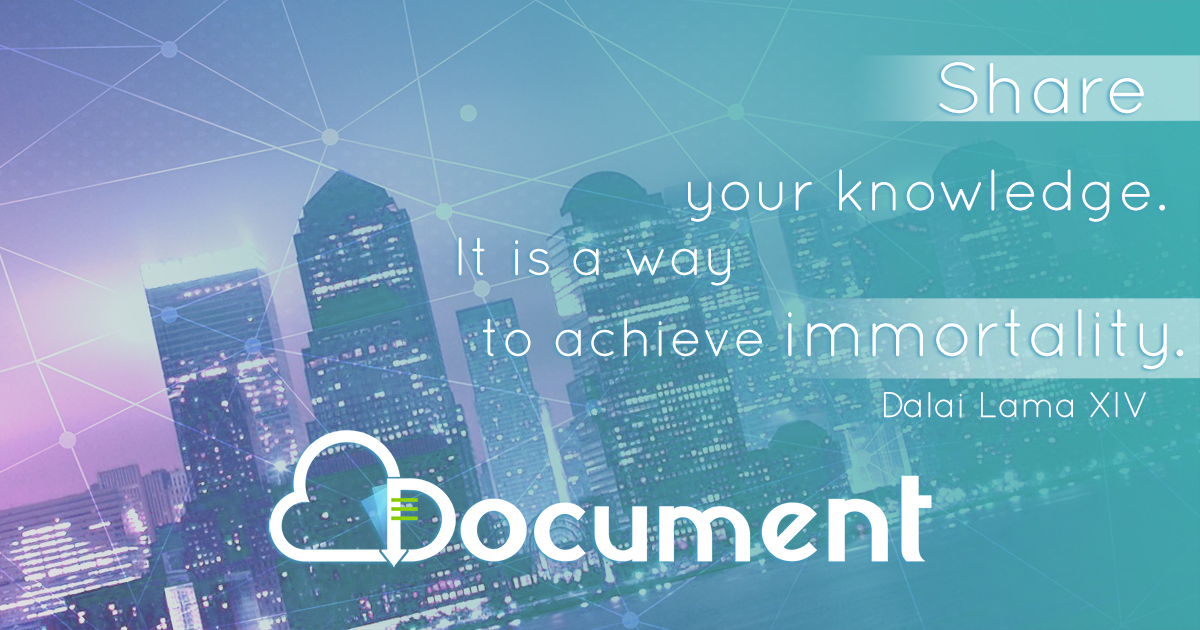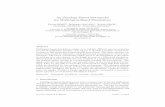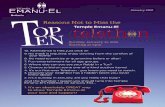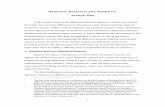Ten Reasons to Metamodel ASMs
-
Upload
mundusphd-interzones -
Category
Documents
-
view
3 -
download
0
Transcript of Ten Reasons to Metamodel ASMs
Ten Reasons to Metamodel ASMs
Angelo Gargantini1 Elvinia Riccobene2 Patrizia Scandurra2
1 Dip. di Ing. Gestionale e dell'Informazione, Università di Bergamo, [email protected]
2 Dip. di Tecnologie dell'Informazione, Università di Milano, Italy{riccobene,scandurra}@dti.unimi.it
Abstract Model-Driven Engineering (or MDE) is an emerging approachfor system development which refers to the systematic use of models asprimary engineering artifacts throughout the engineering lifecycle. MDEputs emphasis on bridges between di�erent working contexts and onthe integration of bodies of knowledge di�erently developed. We discussthe mutual advantages that the integration of MDE and Abstract StateMachines (ASMs) would provide: MDE can gain rigour and preciseness,while ASMs get a standard abstract notation and a general frameworkfor a wide tool interoperability.
Introduction
Model-driven Engineering (MDE) [12] is an emerging approach for software de-velopment and analysis where models play the fundamental role of �rst-class ar-tifacts. Metamodelling is a key concept of the MDE paradigm and it is intendedas a modular and layered way to endow a language or a formalism with an ab-stract notation, so separating the abstract syntax and semantics of the languageconstructs from their di�erent concrete notations. Furthermore, metamodellingallows to settle a �global framework� to enable otherwise dissimilar languages(of possibly di�erent domains, the so called Domain-speci�c languages) to beused in an interoperable manner in di�erent technical spaces, namely workingcontexts with a set of associated concepts, knowledge, tools, skills, and possi-bilities. Indeed, it allows to establish precise bridges (or projections) among themetamodels of these di�erent domain-speci�c languages to automatically exe-cute model transformations.
To achieve the goal of a global interoperability and merging of bodies ofknowledge with rigor and preciseness, an integration of the MDE paradigm withformal methods is necessary [23].
This is a position paper mainly aimed at explaining the feasibility and theadvantages of the proposed integration in the context of the Abstract StateMachines (or ASMs).
We strongly believe that applying the MDE approach to ASMs is worthwhileat least for the following ten reasons, later discussed: (R1) to have a standardabstract notation as uni�ed representation of ASM concepts independent of anyparticular implementation platform; (R2) to have a graphical representation of
ASMs also useful for teaching purposes; (R3) to have an interchange formatamong ASM tools; (R4) to have standard libraries and APIs to use in new orexisting tools and programs; (R5) to automatically derive a family of languages,visual/textual notations and their parsers; (R6) to allow tool interoperability;(R7) to help the integration of existing tools; (R8) to help the development of newtools; (R9) to export ASMs to other environments and permit the integrationwith other specialized external notations and tools (for instance for propertyveri�cation and testing); and last but not least, (R10) to complement the MDEwith a formal approach.
The overall goal of our project is to develop a uni�ed abstract notation forASM and a general framework for a wide interoperability and integration oftools around ASMs. We started by de�ning the AsmM, a metamodel for ASMs,in [28,10]. We have, therefore, developed the ASMETA framework [10] as aninstantiation of the metamodelling framework for ASMs, to create and handleASM models exploiting the advantages o�ered by the metamodelling approachand its related facilities (in terms of derivatives, libraries, APIs, etc.). ASMETAprovides a global infrastructure for interoperability of ASM application tools(new and existing ones) including ASM model editors, ASM model repositories,ASM model validators, ASM model veri�ers, ASM simulators, ASM-to-Any codegenerators, etc.
Each reason stated above may not su�ce to justify the e�ort of developing acomplex metamodel as AsmM, but we hope that all together will convince eventhe most skeptical reader that the application of the MDE approach to ASMsis worthwhile. Note that not only ASMs would bene�t from this approach: weexpect that new synergies arise and that the cooperative interaction amongASMs and MDE creates an enhanced combined e�ect - as outlined in R10.
R.1 To have a standard abstract notation
The success of the ASM as a system engineering method able to guide thedevelopment of hardware and software systems, from requirements capture totheir implementation, is nowadays widely acknowledged [14]. The increasing ap-plication of the ASMs for academic and industrial projects has caused a rapiddevelopment of tools for ASM model analysis, namely simulation, property veri�-cation, and test generation. Among these tools we can cite AsmGofer [43], AsmL[8], Xasm [50], TASM [45], ASM workbench [15,49], CoreASM [18], ATGT [11]and other tools based on model checkers and theorem provers [25,49,26,42,20].
To encode ASM models, each tool uses a di�erent syntax strictly dependingon the implementation environment (C for XASM, Gofer for AsmGofer, .NETfor AsmL, etc.), adopts a di�erent internal representation of ASM models, andprovides proprietary constructs which extend the basic mathematical conceptsof ASMs. There is no agreement around a common standard ASM language.The result is that a practitioner willing to use an ASM tool needs to know itsown syntax and that most ASM researchers still use their own ASM notation,normally not de�ned by a grammar but in terms of mathematical concepts.
Moreover, due to the lack of abstractness of the tool languages, the process ofencoding ASM models is not always straightforward and natural, and one needsto map mathematical concepts, like ASM states (namely universes and functionsde�ned on them), into types and structures provided by the target language.
To achieve the goals of developing a uni�ed abstract notation for ASM, anotation independent from any speci�c implementation syntax and allowing amore direct encoding of the ASM mathematical concepts and constructs, andtackling the problem of ASM tool interoperability and integration, we exploitedthe metamodelling approach suggested by the MDE.
According to the MDE terminology, a metamodel de�nes the abstract syn-
tax of a language, i.e. the structure of the language, separated from its concretenotation. A metamodel-based abstract syntax de�nition has the great advan-tage of being suitable to derive from the same metamodel (through mappingsor projections) di�erent alternative concrete notations, textual or graphical orboth, for various scopes like graphical rendering, model interchange, standardencoding in programming languages, and so on. Therefore, a metamodel couldserve as standard representation of a formal notation, establishing a commonterminology to discriminate pertinent elements to be discussed, and therefore,helps to communicate understandings, especially if � as in the case of ASMs � theformal method is still evolving and the community is too much heterogeneous toeasily come to an agreement on an unique textual notation. Note that the goalof achieving a standrad and lean syntax for ASM speci�cations is shared withthe CoreASM project [18].
In [28,10], a complete metamodel for ASMs is presented. As MDE frame-work, we adopted the OMG's metamodelling platform. The AsmM (AbstractState Machines Metamodel) results into class diagrams developed using the MOF(the OMG's metalanguage to de�ne metamodels) modelling constructs (classes,packages, associations). We developed the metamodel in a modular and bottom-
up way. We started separating the ASM static part represented by the state,namely domains, functions and terms, from the dynamic part represented bythe transition system, namely the ASM rules. Then, we proceeded to model Ba-sic ASMs, Turbo ASMs, and Multi-Agent (Sync/Async) ASMs, so re�ecting thenatural classi�cation of abstract state machines.
The complete metamodel is organized in one package called ASMETA, whichis further divided into four packages as shown in Fig. 1. Each package coversdi�erent aspects of ASMs. The dashed gray ovals in Fig. 1 denote the packagesrepresenting the notions of State and Transition System, respectively.
The Structure package de�nes the architectural constructs (modules andmachines) required to specify the backbone of an ASM model. The Definitionspackage contains all basic constructs (functions, domains, constraints, rule dec-larations, etc..) which characterize algebraic speci�cations. The Terms pack-age provides all kinds of syntactic expressions which can be evaluated in astate of an ASM. The TransitionRules package contains all possible transi-tion rules schemes of Basic and Turbo ASMs. All transition rules derived from
Figure 1. Package structure of the ASM Metamodel
basic and turbo ones (e.g. the case-rule and the while-rule) are contained in theDerivedTransitionRules package.
Each class of the metamodel is equipped with a set of relevant constraints,OCL (version 2.0 [34]) invariants written to �x how to meaningfully connectan instance of a construct to other instances, whenever this cannot be directlyderived from the class diagrams. All OCL constraints have been syntacticallychecked by using the OCL checker OCLE [36].
In order to make AsmM able to support the languages of existing ASM tools,we have enriched the metamodel with particular forms of domains, special termsand derived rule schemes taken from these languages (see [28] for details). Wehave borrowed some extended terms including conditional terms and comprehen-sion terms from ASM-SL, maps, sets and sequences from AsmL. Named ruleswith parameters (RuleDeclaration) appear in ASM-SL, while the concepts ofsubmachine computation, iteration, and recursion, modelled in the AsmM re-spectively by the classes SeqRule and IterateRule, can be found in XASM aswell as in AsmL (with an Object Oriented style, though). The agent represen-tation in the AsmM is similar to the agents of AsmGofer, although Agents isan abstract domain in our metamodel, while Agent is a integer domain in As-mGofer. In Sect. R.9, we clarify how the metamodel is able to capture all allforseeable features of a possible ASM language; therefore, AsmM can be used asstandad reference syntax.
R.2 To have a graphical abstract notation
People often claim that formal methods are too di�cult to put in practice dueto their mathematical-based foundation. In this direction an abstract and visual
representation1, like the one provided by a MOF-compliant metamodel, deliversa more readable view of the modelling primitives o�ered by a formal method, es-pecially for people, like students, who do not deal well with mathematics but arefamiliar with the standard MOF/UML. Therefore, the AsmM can be considereda complementary approach to [14] for the presentation of ASMs.
We here give evidence of how the metamodel can be useful to introduceASMs. We present only a very small fragment of the AsmM whose completedescription can be found in [28,10].
Fig. 2 shows the backbone of a basic ASM. An instance of the root classAsm represents an entire ASM speci�cation. According to the working de�nitiongiven in [14], a basic ASM has a name and is de�ned by a Header (to establishthe signature), a Body (to de�ne domains, functions, and rules), a main rule,and a set of initial states (instances of the Initialization class). Executinga basic ASM means executing its main rule starting from one speci�ed initial
state, i.e. the one denoted by the association end defaultInitialState.
The composite relationships between the class Asm (the whole) and its com-ponent classes (the parts) assures that each part is included in at most one Asminstance.
Figure 2. Backbone
An ASM without a main rule and without a set of initial states (see themultiplicity of association ends mainRule and initialState) is called module2
which is useful to syntactically structure large speci�cations.
The Header (see Fig. 3) consists of some import clauses and an optionalexport clause to specify the names which are imported from or exported toother ASMs (or ASM modules), and of its signature containing the declara-
tions of the ASM domains and functions. Every ASM is allowed to use only
1 It should be noted that the visual representation for the (abstract) syntax of thelanguage has not to be confused with a possible graphical notation for ASM speci-�cations, which we refer to in Sect. R.5.
2 This de�nition of module di�ers slightly from the module concept outlined in Chap.2 of [14]; but, it has been accorded with the authors.
Figure 3. Header
Figure 4. Body
identi�ers (for domains, functions and transition rules) which are de�ned withinits signature or imported from other ASMs or ASM modules.
The initialization of an ASM consists of a set of initial states. The classInitialization (not described here, see [28,10] for details) models the notionof an initial state. All possible initial states are linked (see Fig. 2) to an ASMby the association end initialState and one initial state is elected as default(see the association end defaultInitialState).
The Body (see Fig. 4) of an ASM consists of (static) domain and (static/de-rived) function definitions according to domain and function declarations inthe signature of the ASM. It also contains declarations of transition rules
and de�nitions of axioms for constraints one wants to assume for some domains,functions, and transition rules of the ASM.
R.3 To have an interchange format
The interoperability among ASM tools can be (at least partially) achieved by acommon interchange format. The work in [7] represents the �rst and the only
attempt in this respect; it was based on the use of a pure XML format andunfortunately it has never been completed.
Whenever a language or formalism is speci�ed in terms of a MOF-compliantmetamodel, the MOF enables a standard way to generate an XMI (XML Meta-data Interchange) [34] interchange format for models in that language. The mainpurpose of XMI is to provide an easy interchange of data and metadata betweenmodelling tools and metadata repositories in distributed heterogeneous envi-ronments. The XMI format is not for human consumption and it is not to beconfused with the �concrete syntax� used by modelers to write their models.It has to be intended, instead, as an e�ective hard code to be automaticallygenerated for interchanging purposes only.
To tackle the problem of ASM tool interoperability, we exploit the mechanismof deriving a speci�c XMI format from the metamodel. The ASM-XMI format,given as XML document type de�nition �le (commonly named DTD), has beengenerated automatically from the AsmM in the MDR framework. First, we havedrawn the AsmM with the Poseidon UML tool (v. 4.2) and saved it in theUML-XMI format. Then, we have converted it to the MOF 1.4 XMI by meansof the UML2MOF transformation tool provided by the Netbeans MDR project.Finally, we have loaded the MOF model in the MDR framework of Netbeans andaccording to the rules speci�ed by the MOF 1.4 to XMI 1.2 mapping speci�cation[51], the DTD for AsmM models was generated.
In Section R.6 we discuss the role of the ASM-XMI format for interchangingASM models among tools.
R.4 To have standard libraries
Applications and tools endowed with MOF-compliant metamodels, can havetheir Java Metadata Interface (JMI) [32] automatically generated. The JMIstandard is based on the MOF 1.4 speci�cation and de�nes a Java applica-tion program interface (API) for the creation, storage, access and manipulationof metadata in a MOF-based instance repository.
From the AsmM in the MDR framework we also automatically generate aJMI library for AsmM models (see [28] for more details). JMI can be used inclient programs written in Java which want to manipulate ASM models (to readmodel structure, to modify parts of the speci�cation and create new elements),as well as by tool developers to speed up the creation of new tools supportingASMs. In Sections R.6, R.7, R.8 we show how the JMI can be useful for toolinteroperability, integration of existing tools, and development of new tools.
Besides the XMI and JMI libraries already discussed, other libraries canbe developed from MOF-compliant metamodels to provide additional facilities.Among them, we mention CMI (CORBA Metadata Interface) [17] for bridgingwith the middleware CORBA space.
R.5 To derive concrete notations and their parsers
A MOF-compliant metamodel allows to derive di�erent alternative concrete no-tations, textual or graphical. Initially, we investigated the use of tools like HUTN(Human Usable Textual Notation) [31] or Anti- Yacc [19] which are capable ofgenerating text grammars from speci�c MOF-based repositories. Nevertheless,we decided not to use them since they do not permit a detailed customizationof the generated language and they provide concrete notations merely suitablefor object-oriented languages. There are better MOF-to-grammar tools now, likexText [22] of OpenArchitectureWare or TCS of AMMA [3], which we may con-sider to adopt in the future.
In [27] we de�ne general rules on how to derive a context-free EBNF (Ex-tended Backus-Naur Form) grammar from a MOF-compliant metamodel, andwe use these mapping rules to de�ne an EBNF grammar from the AsmM for anASM textual notation. The resulting language, called AsmetaL3, is completelyindependent from any speci�c platform and allows a natural and straightforwardencoding of ASM models. We design AsmM without any speci�c implementationplatform in mind. The language derived from it does not contain any platform-dependent concept. Instead, the language of CoreASM explicitly contains direc-tives for importing plug-ins written in Java, and the AsmL permits the use ofthe Microsoft .NET library.
In [27], we also provide guidance on how to assemble a JavaCC �le givenin input to the JavaCC parser generator [2] to automatically produce a parserfor the EBNF grammar of the AsmetaL. This parser is more than a grammarchecker: it is able to process ASM models written in AsmetaL, to check for theirconsistency w.r.t. the OCL constraints of the metamodel, and to create instancesof the AsmM in a MDR MOF repository through the use of the AsmM-JMIs.
The complete AsmetaL grammar is reported in [28] and is also available in[10] together with the AsmetaL parser.
We have validated the metamodel and the AsmetaL notation to asses theirusability and capability to encode ASM models. To this purpose, we have askedto a non ASM expert to port some speci�cations from [14] and other ASM casestudies to AsmetaL. The task was completed within three man-months.
Up to now we have about 140 ASM speci�cations encoded in AsmetaL andavailable in [10]. We are strongly con�dent that AsmetaL satis�es all the desiredrequirements of expressivity, abstractness and easiness of use.
Note that concrete notations derived from metamodels can be also graphical.For instance, the Eclipse Graphical Modeling Framework (GMF) [4] provides agenerative component and runtime infrastructure for developing graphical edi-tors based on Eclipse Modelling Framework (EMF) [1] and the eclipse GraphicalEditing Framework (GEF). The GMF follows a novel approach which suggeststo derive modelling tools, like graphical model editors, from metamodels [35].
3 A preliminary version of the AsmetaL language can be found in [41], under the nameof AsmM-CS (AsmM Concrete Syntax).
R.6 To allow tool interoperability
The existing ASM tools for model validation and veri�cation, have been devel-oped by encoding an ASM formal model into the language of the implementationenvironment and exploiting the computation engine and validation/veri�cationalgorithms and techniques of the implementation system to compute ASM runsand prove properties. Since each tool usually covers well only one aspect of thewhole system development process, at di�erent steps modelers and practitionerswould like to switch tools to make the best of them while reusing informationalready entered about their models. However, ASM tools are loosely coupledand have syntaxes strictly depending on the implementation environment. Thismakes the integration of tools hard to accomplish and prevents ASMs from beingused in an e�cient and tool supported manner during the software developmentlife-cycle. Therefore, a way to support tools interoperabilty is of great interestfor the ASM community and can be achieved by the combination of standardslike MOF, XMI (R.3), and JMIs (R.4).
Basically, all ASM artifacts/tools can be classi�ed in: generated, based, and in-tegrated. Generated artifacts/tools are derivatives obtained (semi-)automaticallyby applying to the AsmM metamodel appropriate projections from MOF to thetechnical spaces Javaware, XMLware, and grammarware. Based artifacts/toolsare those developed exploiting the AsmM metamodel and related derivatives.Finally, integrated artifacts/tools are external and existing tools that are con-nected to the ASM metamodelling environment.
Fig. 5 shows a scenario of interoperability among ASM tools as suggested byour approach. Generated/based tools (like Tool A in the �gure) can access ASMmodels through the APIs (like the AsmM JMIs) in a MOF repository (like theSUN MDR [5]) where ASM models reside. They can also exchange ASM modelsin the XML/XMI standard format: a XMI reader and writer provided by MDRcan be used to load/save an ASM model from/into a XML �le.
Integrated tools can interoperate in di�erent ways. Some tools (like Tool Bin the �gure) can exchange ASM models in the XML/XMI standard format andverify their validity with respect to the given AsmM XMI DTD. Tool providersonly need supply their tools with appropriate plug-ins capable of importingand/or exporting the XMI format for the AsmM (by using XMI readers/writers).Other tools (like Tool C in the �gure) may keep their input data formats: in thiscase walkers must be developed to translate ASM models from the repositoryto the tool proprietary formats. Mixed approaches are also possible, as the oneadopted in modifying the ATGT tool, as explained in Section R.7.
A modeler can also start writing her/his ASM speci�cation in AsmetaL andthen, through the connection to the repository provided by the parser, transformit, for example, into the XMI interchange format.
R.7 To help the integration of existing tools
We here discuss how we modi�ed the ATGT tool [11] in order to make it AsmM-compliant. ATGT takes an ASM speci�cation (written using the AsmGofer syn-
Figure 5. ASM model interchange through XMI and APIs
tax) and produces a set of test predicates, translates the original ASM speci-�cation to Promela (the language of the model checker SPIN used to generatetests), and generates a set of test sequences by exploiting the counter examplegeneration of the model checker.
Figure 6. Adapting ATGT to the AsmM
ATGT is written in Java. It already (see Fig. 6) has its own parser for As-mGofer �les, which reads a speci�cation and builds an internal representationof the model in terms of Java objects. The tool functionalities are delegated tothree components (Test predicate generator, Tests generator, ASM to Promela)which read the data of the loaded ASM speci�cation and perform their tasks.
In our approach, ATGT keeps its own data structures to represent the ASMmodels and other information necessary for the services it provides. In this way
we do not modify the three most critical components, which continue to processdata in the old representation.
To make ATGT capable of reading AsmM models, we �rst added a new com-ponent, the JMI/XMI reader, which is automatically derived from the metamodelby using MDR Netbeans. This JMI/XMI reader parses a XMI �le containing theASM speci�cation the user wants to load and produces the JMI objects repre-senting the loaded ASM. Then we added a module, called JMI queries, whichqueries those JMI objects and builds the equivalent model in terms of ATGTinternal data. The JMI queries are very similar to the AsmGofer parser alreadyin ATGT, except that they read the information about the ASM model fromJMI data instead of a �le.
Although we did not exploit the power of the metamodel inside ATGT andwe simply made ATGT AsmM-compliant, the result is worthwhile and the e�ortis limited: adding this new feature to ATGT required about two man-months.If we started today from scratch to develop ATGT, we would use directly JMIto represent ASM models, since JMI o�ers a stable and clean interface that isderived from the metamodel (see Sect. R.4). The use of JMI would avoid theburden of writing internal libraries for representing ASM models. For this reason,we have started working on making the internal representation of ASM modelsthat ATGT adopts equivalent to the JMI, in order to eventually integrate JMIdirectly in ATGT (work in progress in Fig. 6).
Further advances in the MDE direction [13] would be replacing the ASM toPromela and the AsmGofer parser components by model transformations fromthe AsmM (as pivot metamodel, see Sect. R.9) to Promela metamodel and fromGofer metamodel to the AsmM, provided that such metamodels for Promela andGofer (linked to their concrete syntax) exist.
R.8 To help the development of new tools
MDE helps developers to build new tools by providing an interchange format(R.3), standard libraries (R.4) and several possible maps to concrete syntaxesand parsers (R.5). By exploiting these technologies, a developer who is interestedin developing a new tool for ASMs, does not need to write a parser, an internalrepresentation of ASMs and an interchange format (if he/she wishes to export,import �les from other tools). In particular, the development of a grammar canbe very time consuming and error prone - specially if one wants to be able toread complete ASM speci�cations. Internal representations of ASMs are normallybound to the parser which is being de�ned, and a small change in the parsermay require an update of the internal libraries and refactoring of the code. Allthese tasks can require a good deal of time and e�ort, although they are notrelevant for the particular technique or algorithm being developed. In the MDEapproach, the developer needs to understand the metamodel (for example byreading its graphical representation - R.2) and then focus on the functionalitieshe/she intend to support with the new tool.
For instance, we have developed a general-purpose ASM simulation engine
[29,10], called AsmetaS, to make AsmM models executable. This tool is an ex-ample of Tool A (see Fig. 5) since essentially it is an interpreter which navigatesthrough the MOF repository where ASM models are instantiated (as instancesof the AsmM metamodel) to make its computations. We do not have to dealwith basic functionalities such as parsing, abstract syntax trees, type checking,etc., since they are already provided by the MOF-environment. We have focusedthe development on those classes necessary to simulate an ASM, and the con-struction of the update set has required only the de�nition of the class UpdateSetrepresenting an update set and the class UpdateSetBuilder building an updateset. UpdateSetBuilder introduces a method UpdateSet m(R r) which, for everyclass R representing a rule, builds the update set for the rule r of class R.
The architecture of this interpreter is very simple and consists in only 20classes. It also allows a modular and incremental development. A �rst prototype(available at [10]) has been developed in only three man months and is ableto interpret basic, turbo without submachine calls, and synchronous multiagentASMs.
R.9 To integrate ASMs with other notations/tools
In the MDE direction, AsmM can be seen as the pivot metamodel toward asystematic integration among ASM tools and between ASMs and external tools.
According to the view presented in [13], a pivot metamodel of a given for-malism or language L is intended as a platform-independent modelling languagewhich abstracts a certain number of general concepts about L. The integrationamong tools supporting L can be achieved by providing, for the notation L′ (adialect of L) of each tool TL, a metamodel � seen as a platform-speci�c modellinglanguage � and model transformations to the pivot and from the pivot to the L′-metamodel. Hence, the metamodel of the notation Li of a tool T i
L can be linked
to the metamodel of the notation Lj of another tool T jL by the composition of
the two transformations from Li-metamodel to the pivot and from the pivot tothe Lj-metamodel. In this way, the interoperability between tools T i
L and T jL is
achieved by translating PSM (Platform-speci�c Model) models written in Li toLj and vice versa.
In the ASM context, AsmM can be adopted as pivot metamodel and wouldallow the integration among ASM tools at the level of metamodels. For example,if we take AsmGofer as tool T i
L and AsmL as tool T jL and we had de�ned the
corresponding metamodels together with precise transformation bridges from/toAsmM, we may map an AsmGofer-PSM into an AsmL-PSM.
Similarly, one can integrate the language L or one of its tools TL with a toolusing a notation M by providing a bridge between the pivot metamodel of L tothe metamodel of M . In the ASM context, the AsmM may allow the integrationbetween ASMs and tools like the model checkers Spin or SMV, provided thatthe metamodels for their notations exist.
For most notations M , however, the metamodel does not exists, and M issimply pure text. In this case the bridge must be built between the metamodelof L and a textual notation, and this can be done by using MOF-to-grammartools, like xText [22] of OpenArchitectureWare or TCS of AMMA [3]. In the ASMcontext, we may �compile� ASM models into a programming language, like Java,by applying a AsmM-to-Java transformation to the input ASM model.
R.10 To complement the MDE with a formal approach
In the previous sections, we have discussed some advantages that ASMs can gainfrom MDE. We believe that the MDE paradigm can also gain rigor and precise-ness from the integration with ASMs as formal method. The semantics speci�-cation of domain-speci�c modeling languages (de�ned in terms of a metamodel),for example, is an open problem in the MDE approach. The OMG metamod-elling framework provides, by means of metamodels and UML pro�les (UMLmetamodel extensions for a particular application domain), standard techniquesto de�ne the abstract syntax and static semantics (the OCL constraints) of aDomain-speci�c language. However, it lacks of any standard and rigorous sup-port to provide the dynamic (operational) semantics, which is usually given innatural language. This lack has several negative consequences, as con�rmed byexisting work in literature which aims at formalizing the UML semantics.
Techniques and approaches to the precise and pragmatic de�nition of behav-ioral semantics for domain-speci�c languages are still under development. Onepromising method, called semantic anchoring relies on the use of well-de�nedsemantic units of simple, well-understood constructs (like a �nite state machine)and on the use of model transformations that map higher level modeling con-structs into con�gured semantic units. This approach has been followed, forexample, by the authors in [16,46], where AsmL is used as a common semanticframework to de�ne the semantic domain of Domain-speci�c languages.
We believe that any formalism proposed as semantic framework must ad-dress the following important characteristics: (i) it should be formal and powerfulenough to rigorously de�ne the operational semantics of complex real languages,(ii) it should be executable in order to validate the metamodels' semantics, (iii) itshould be endowed with a metamodel-based de�nition conforming to the meta-modelling framework in order to allow the applicability of model transformationtools, and (iv) it should be able to work at high levels of abstraction. Accordingto these requirements, the ASM formalism seems to be a good candidate.
Similarly to the approach in [16], we propose ASMs as semantic frameworkto de�ne the (operational) semantics of metamodel-based languages. The keyidea is a smooth integration of the AsmM metamodel with the OMG frameworkin order to provide a means to rigorously de�ne the operational semantics ofmetamodel-based languages and, in particular, of UML extensions (pro�les),in a way which permits us to uniformly link abstract syntax, expressed in theMOF metalanguage, and detailed semantics, expressed in ASMs (here promotedas metalanguage, too) of languages.
Figure 7. An integrated framework for metamodel-based language speci�cation
In practice, this integration may be done as shown in Fig. 7. At the meta-metamodel level, the MOF core constructs i.e., the Infrastructure Library, haveto be mapped into ASM concepts. This may be done by de�ning a set of trans-formation rules, TMOFToASM, from the Infrastructure Library metamodel to theAsmM metamodel.
At the metamodel level, a metamodel or a UML pro�le LMOF of a givenlanguage L is translated by TMOFToASM to a ground ASM-compliant meta-model L1
AsmM of L made of multi-sorted �rst-order structures, i.e. sets withrelations, functions and constraints, representing classes and associations of thesource LMOF metamodel. L1
AsmM needs to be complemented with the semanticaspects of the language L. The computational model which re�ects the opera-tional semantics of L, say L2
AsmM, is de�ned through ASM transition rules. Thestatic structures of the ASM signature L1
AsmM is further re�ned and enrichedwith dynamic aspects, e.g., designating some speci�c entities to be ASM agents,and introducing new functions, which, however, may be present in the origi-nal metamodel expressed in terms of OCL query/operations. We say LAsmM =L1
AsmM + L2AsmM the �nal result of this modelling activity.
Note that, the process of applying the TMOFToASM can be fully automatizedby means of a transformation engine like the ATL in the AMMA platform [3],Xactium XMF Mosaic [6], etc. However, a certain human e�ort is still requiredto capture in terms of ASM transition rules the behavioural aspects of the givenlanguage.
We have applied the proposed methodology to a UML pro�le for the SystemClanguage [39] - as part of the de�nition of a model-based SoC (System-on-chip)design �ow for embedded systems [21,40] - to de�ne the operational semanticsof the SystemC Process State Machines, an extension of the UML statechartsused to model the reactive behaviour of the SystemC processes.
Although the proposed approach has been �rst identi�ed and tested for theOMG's framework, it could be easily extended and applied to other metamod-elling frameworks.
Related work
Concerning the de�nition of a concrete language for ASMs, other previous pro-posals exist. The Abstract State Machine Language (AsmL) [8] developed bythe Foundation Software Engineering group at Microsoft is the greatest e�ortin this respect. AsmL is a rich executable speci�cation language, based on thetheory of ASMs, expression- and object- oriented, and fully integrated into the.NET framework and Microsoft development tools. However, AsmL does notprovide a semantic structure targeted for the ASM method. �One can see it asa fusion of the Abstract State Machine paradigm and the .NET type system,in�uenced to an extent by other speci�cation languages like VDM or Z� [52].Adopting a terminology currently used, AsmL is a platform-speci�c modelinglanguage for the .NET type system. A similar consideration can be made alsofor the AsmGofer language [43]. An AsmGofer speci�cation can be thought, infact, as a PSM (platform-speci�c model) for the Gofer environment.
Other speci�c languages for the ASMs, no longer maintained, are ASM-SL[15], which adopts a functional style being developed in ML and which hasinspired us in the language of terms, and XASM [50] which is integrated inMontages, an environment generally used for de�ning semantics and grammarof programming languages. Recently other simulation environments for ASMshave been developed, including the CoreAsm [18], an extensible execution en-gine developed in Java, and TASM (Timed ASMs) [45], an encoding of TimedAutomata in ASMs.
Concerning the metamodeling technique for language engineering, we canmention the o�cial metamodels supported by the OMG [37] for MOF itself, forUML [47], for OCL, etc. Academic communities like the Graph Transformationcommunity [30,44,48] and the Petri Net community [38], have also started tosettle their tools on general metamodels and XML-based formats. A metamodelfor the ITU language SDL-2000 has been also developed [24]. Recently, a meta-model for the AsmL language is available in the XMI format at [9] as part ofa zoo of metamodels de�ned by using the KM3 meta-language [33]. However,this metamodel is not appropriately documented or described elsewhere, so thisprevent us to evaluate it for our purposes.
References
1. Eclipse Modeling Framework. http://www.eclipse.org/emf/.2. Java Compiler Compiler. https://javacc.dev.java.net/.3. The AMMA Platform. http://www.sciences.univ-nantes.fr/lina/atl/.4. The Eclipse Graphical Modeling Framework. http://www.eclipse.org/gmf/.5. The MDR (Model Driven Repository) for NetBeans. http://mdr.netbeans.org/.
6. The Xactium XMF Mosaic. http://www.modelbased.net/www.xactium.com/.7. M. Anlau�, G. Del Castillo, J. Huggins, J. Janneck, J. Schmid, and W. Schulte. The
ASM-Interchange Format XML Document Type De�nition (ASM-DTD). http:/
/www.first.gmd.de/~ma/asmdtd.html.8. The ASML Language. http://research.microsoft.com/foundations/AsmL/.9. The AsmL metamodel in the Atlantic Zoo. http://www.eclipse.org/gmt/am3/
zoos/atlanticZoo/#AsmL, 2006.10. The Abstract State Machine Metamodel and its tool set. http://asmeta.sf.net/.11. ATGT: ASM tests generation tool. http://cs.unibg.it/gargantini/project/
atgt/.12. J. Bézivin. On the Uni�cation Power of Models. Software and System Modeling
(SoSym), 4(2):171�188, 2005.13. J. Bézivin, H. Bruneliére, F. J. Jouault, and I. Kurtev. Model Engineering Support
for Tool Interoperability. In The 4th Workshop in Software Model Engineering(WiSME'05), Montego Bay, Jamaica, 2005.
14. E. Börger and R. Stärk. Abstract State Machines: A Method for High-Level SystemDesign and Analysis. Springer Verlag, 2003.
15. G. D. Castillo. The ASM Workbench - A Tool Environment for Computer-AidedAnalysis and Validation of Abstract State Machine Models. In Proc. of TACAS,volume 2031 of LNCS, pages 578�581. Springer, 2001.
16. K. Chen, J. Sztipanovits, S. Abdelwahed, and E. K. Jackson. Semantic anchoringwith model transformations. In ECMDA-FA, pages 115�129, 2005.
17. OMG, CORBA. http://www.corba.org/.18. The CoreASM Project. http://www.coreasm.org/.19. D. Hearnden and K. Raymond and J. Steel. Anti-Yacc: MOF-to-text. In Proc. of
EDOC, pages 200�211, 2002.20. A. Dold. A Formal Representation of Abstract State Machines Using PVS. Veri�x
Technical Report Ulm/6.2, Universitat Ulm, July 1998.21. E. Riccobene and P. Scandurra and A. Rosti and S. Bocchio. A SoC Design
Methodology Based on a UML 2.0 Pro�le for SystemC. In Proc. of Design Au-tomation and Test in Europe (DATE'05). IEEE, 2005.
22. S. E�tinge. oAW xText - A framework for textual DSLs. In Workshop on ModelingSymposium at Eclipse Summit, 2006.
23. T. M. et al. Challenges in software evolution. In International Workshop onPrinciples of Software Evolution (IWPSE'05), 2005.
24. J. Fischer, M. Piefel, and M. Scheidgen. A Metamodel for SDL-2000 in the Contextof Metamodelling ULF. In Fourth SDL And MSC Workshop (SAM'04), pages 208�223, 2004.
25. A. Gargantini and E. Riccobene. Encoding Abstract State Machines in PVS. InY. G. et al., editor, Abstract State Machines: Theory and Applications, volume1912 of LNCS, pages 303�322. Springer-Verlag, 2000.
26. A. Gargantini, E. Riccobene, and S. Rinzivillo. Using Spin to Generate Testsfrom ASM Speci�cations. In E. Böger, A. Gargantini, and E. Riccobene, editors,Abstract State Machines, Advances in Theory and Practice, number 2589 in LNCS,pages 263�277. Springer, 2003.
27. A. Gargantini, E. Riccobene, and P. Scandurra. Deriving a textual notationfrom a metamodel: an experience on bridging Modelware and Grammarware. In3M4MDA'06 workshop at the European Conference on MDA, 2006.
28. A. Gargantini, E. Riccobene, and P. Scandurra. Metamodelling a Formal Method:Applying MDE to Abstract State Machines. Technical Report 97, DTI Dept.,University of Milan, 2006.
29. A. Gargantini, E. Riccobene, and P. Scandurra. A Metamodel-based Simulator forASMs. In 14th International ASM Workshop, Grimstad, Norway, June 7 � 9, 2007.
30. R. Holt, A. Schürr, S. E. Sim, and A. Winter. Graph eXchange Language. http://www.gupro.de/GXL/index.html.
31. OMG, Human-Usable Textual Notation, v1.0. Document formal/04-08-01. http:
//www.uml.org/.32. Java Metadata Interface Speci�cation, Version 1.0. http://java.sun.com/
products/jmi/, 2002.33. F. Jouault and J. Bézivin. KM3: a DSL for Metamodel Speci�cation. In Proceedings
of 8th IFIP International Conference on Formal Methods for Open Object-BasedDistributed Systems, Bologna, Italy, 2006.
34. OMG. The Model Driven Architecture (MDA). http://www.omg.org/mda/.35. J. P. Nytun, A. Prinz, and M. S. Tveit. Automatic generation of modelling tools.
In Proc. of ECMDA-FA, pages 268�283, 2006.36. OCL Environment (OCLE). http://lci.cs.ubbcluj.ro/ocle.37. The Object Managment Group (OMG). http://www.omg.org.38. Petri Net Markup Laguage (PNML). http://www.informatik.hu-berlin.de/
top/pnml.39. E. Riccobene, P. Scandurra, A. Rosti, and S. Bocchio. A UML 2.0 pro�le for
SystemC: toward high-level SoC design. In EMSOFT '05: Proceedings of the 5thACM international conference on Embedded software, pages 138�141. ACM, 2005.
40. E. Riccobene, P. Scandurra, A. Rosti, and S. Bocchio. A model-driven designenvironment for embedded systems. In Proc. of the 43rd annual Conference onDesign Automation (DAC'06), pages 915�918, New York, NY, USA, 2006. ACM.
41. P. Scandurra, A. Gargantini, C. Genovese, T. Genovese, and E. Riccobene. AConcrete Syntax derived from the Abstract State Machine Metamodel. In 12thInternational Workshop on Abstract State Machines (ASM'05), 8-11 March 2005,Paris, France, 2005.
42. G. Schellhorn and W. Ahrendt. Reasoning about Abstract State Machines: TheWAM Case Study. Journal of Universal Computer Science, 3(4):377�413, 1997.
43. J. Schmid. AsmGofer. http://www.tydo.de/AsmGofer.44. G. Taentzer. Towards common exchange formats for graphs and graph trans-
formation systems. In J. Padberg (Ed.), UNIGRA 2001: Uniform Approaches toGraphical Process Speci�cation Techniques, satellite workshop of ETAPS, 2001.
45. The Timed Abstract State Machine (TASM) Language and Toolset. http://esl.mit.edu/html/tasm.html.
46. R. Thibodeaux. The Speci�cation of Architectural Languages with Abstract StateMachines. In 14th International ASM Workshop, Grimstad, Norway, June 7 � 9,2007.
47. OMG. The Uni�ed Modeling Language (UML). http://www.uml.org.48. D. Varró, G. Varró, and A. Pataricza. Towards an XMI�based model interchange
format for graph transformation systems. Technical report, Budapest Universityof Technology and Economics, Dept. of Measurement and Information Systems,September 2000.
49. K. Winter. Model Checking for Abstract State Machines. Journal of UniversalComputer Science (J.UCS), 3(5):689�701, 1997.
50. XASM: The Open Source ASM Language. http://www.xasm.org.51. OMG, XMI Speci�cation, v1.2. http://www.omg.org/cgi-bin/doc?formal/2002-
01-01.52. Y. Gurevich and B. Rossman and W. Schulte. Semantic Essence of AsmL. Mi-
crosoft Research Technical Report MSR-TR-2004-27, March 2004 .

















